With coauthors from P2 Science, I wrote this article on the performance of P2’s Citropol polymers in hair care. We found that these materials outperform other emollients in hair detangling and conditioning, when formulated in a hair conditioner formulation. The Citropols are particularly effective in hair damage prevention, clearly outperforming all competitive emollients. This study is an example of the product claims support data we can obtain through careful study design.
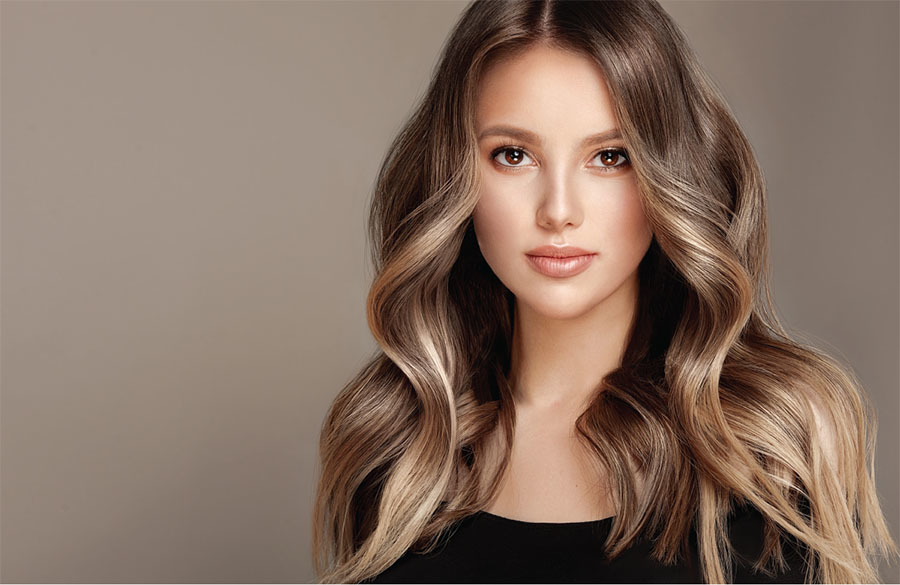
Ashley Oblon*, Delano Wood*, Patrick Foley*, Marc N.G. de Mul† (* P2 Science Inc., Woodbridge, Connecticut; † Measured Innovation LLC, Weston, Connecticut)
Summary
Natural terpene-derived Polycitronellol polymers (CITROPOL® from P2 Science) are sustainable, high-performance alternatives to silicones and non-sustainable emollients for a range of beauty and personal care applications. In this article, we demonstrate the benefits Polycitronellol polymers impart when used in a hair conditioner formula. Specifically, we will demonstrate the significant performance Polycitronellol polymers have on damaged hair in terms of conditioning, reduction in breakage, and shine.
Introduction
Consumers and formulators alike are seeking out healthier and more sustainable ingredients for their beauty and personal care products. However, they are unwilling to make trade-offs with product performance.1 Formulators have struggled to identify sustainable, silicone-free alternatives that deliver on the high performance consumers seek.2 Hair care is one category in which consumers are looking for higher levels of performance in sustainable formulations.
In this article we detail new experimental data demonstrating that one class of green and sustainable materials, the natural terpene-derived polycitronellols, outperforms traditional chemicals in hair care applications. Polycitronellols are polyether oligomers with 2 or more terpene monomers that were designed to exemplify the 12 Principles of Green Chemistry.3, 4 They are produced through a novel polymerization process that results in ordered polymers containing repeated methyl branches and dimethyl ether linkages (Figure 1). This structure mimics that of silicone oils and squalene, resulting in a polymer that is liquid at room temperature and soluble in oils. There are several variants of polycitronellol available that differ in their chain length and chain-end substituents. These variations give the polycitronellols unique sensory and performance properties on skin and in hair.

Figure 1. Polycitronellol molecular structure demonstrating methyl branches and dimethyl ether linkages.
Polycitronellols are easily formulated into cosmetic emulsions as part of the oil phase. Generally, a usage level between 1 and 5% yields the most robust performance in the final formula. These materials function as emollients, solvents, pigment dispersants, deposition aids, defoamers, and sensory modifiers. This makes them highly versatile, multifunctional ingredients for personal care applications.
Table 1. Rinse-off hair conditioner formulation
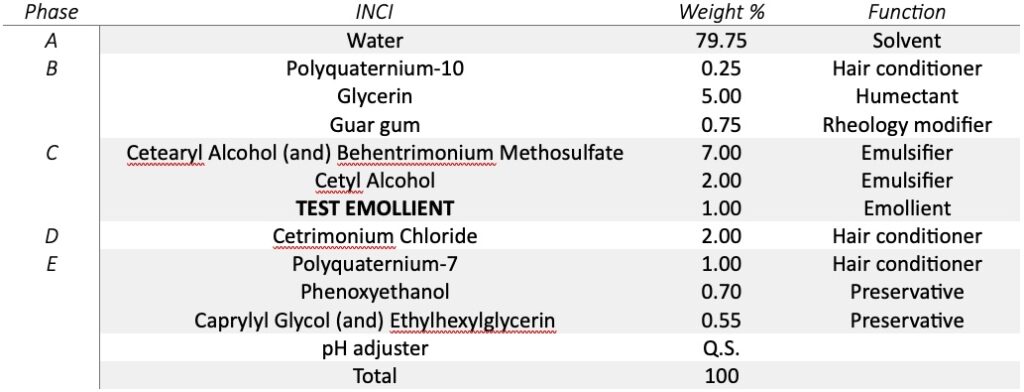
To evaluate polycitronellol performance in hair care, we formulated a rinse-off hair conditioner product containing 1% polycitronellol by weight with a chain length of 3 to 10 monomers, or a blend of Polycitronellol with natural oils (“Polycitronellol complex”, Table 1). We also prepared the same hair conditioner formula without Polycitronellol, utilizing a variety of emollients common in hair care in its place. We measured the wet combing force on the hair after using the formulations using a Dia-Stron Fibra.One hair tress testing machine. Using a Bossa Nova Vision Sirtaki instrument, we measured breakage of the treated hair tresses after repeated combing. Two types of hair were used: bleached blonde tresses and natural brown wavy tresses. The bleached blonde tresses are considered damaged hair, while the natural wavy tresses are virgin untreated hair.
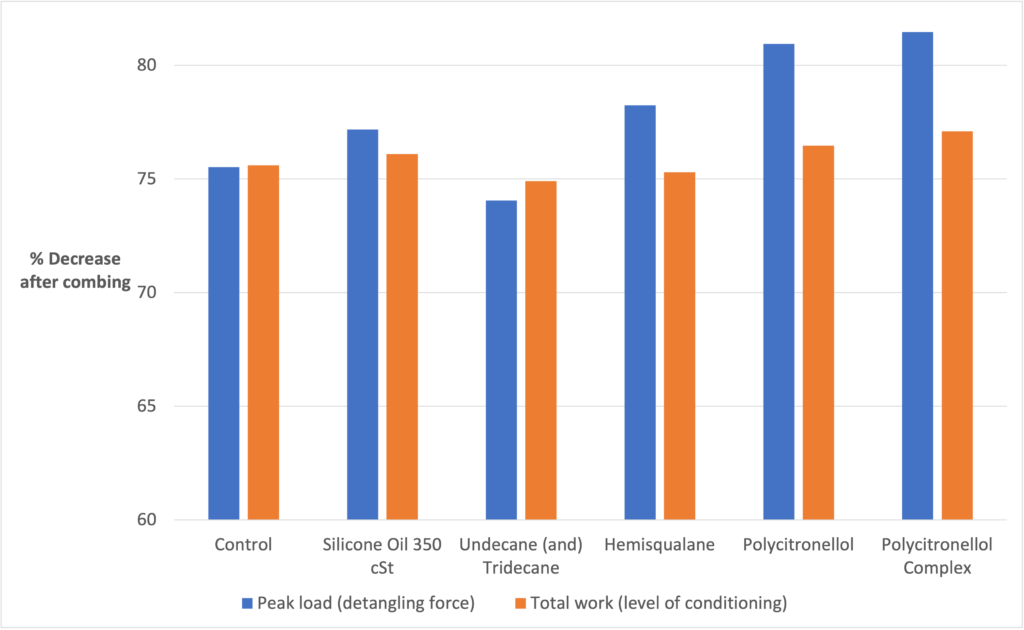
Figure 2. Wet combing experimental results for bleached blonde tresses, comparing Polycitronellol as the emollient with commercial emollients.
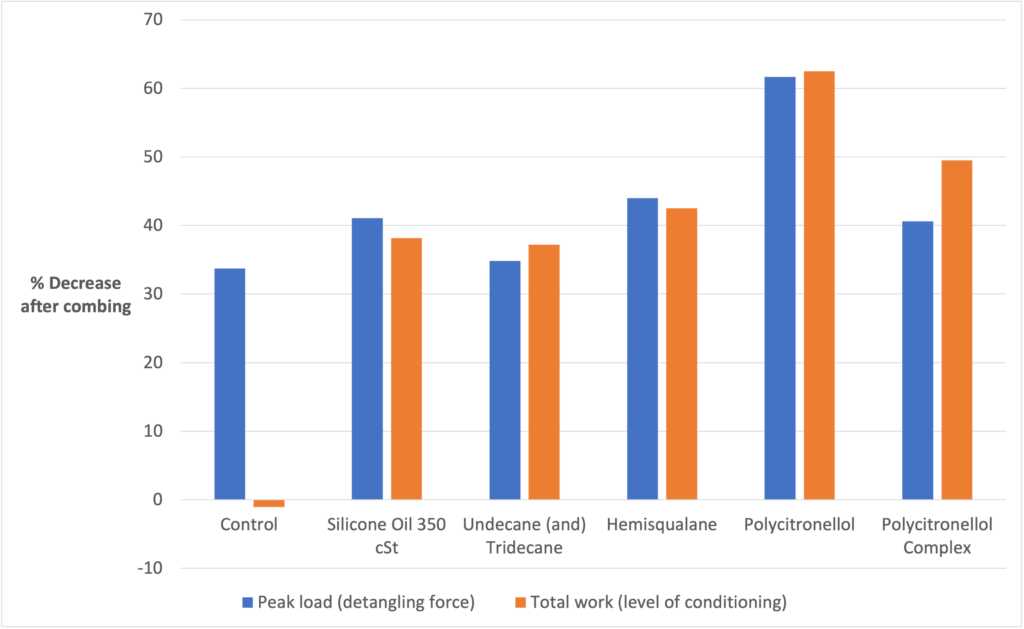
Figure 3. Wet combing experimental results for natural wavy tresses, comparing polycitronellol as the emollient with commercial emollients.
The wet combing results are presented in Figures 2 and 3 for both bleached blonde tresses and natural wavy tresses. A taller bar indicates a larger decrease in combing force required to pull a comb through the entire tress, signaling increased hair conditioning. For both hair types, Polycitronellol shows the largest lubricating and detangling effect as shown by a significantly larger reduction in peak combing force compared to the control [CH1][Md2] (untreated hair), which we attribute to improved detangling. The total combing work, which indicates the degree of hair conditioning, showed a significant improvement in hair conditioning using the Polycitronellol over the control. This conditioning effect is even superior to the conditioning provided by several common hair conditioning emollients. This unexpected and marked increase in conditioning demonstrates the power of the proprietary Polycitronellol molecular structure.
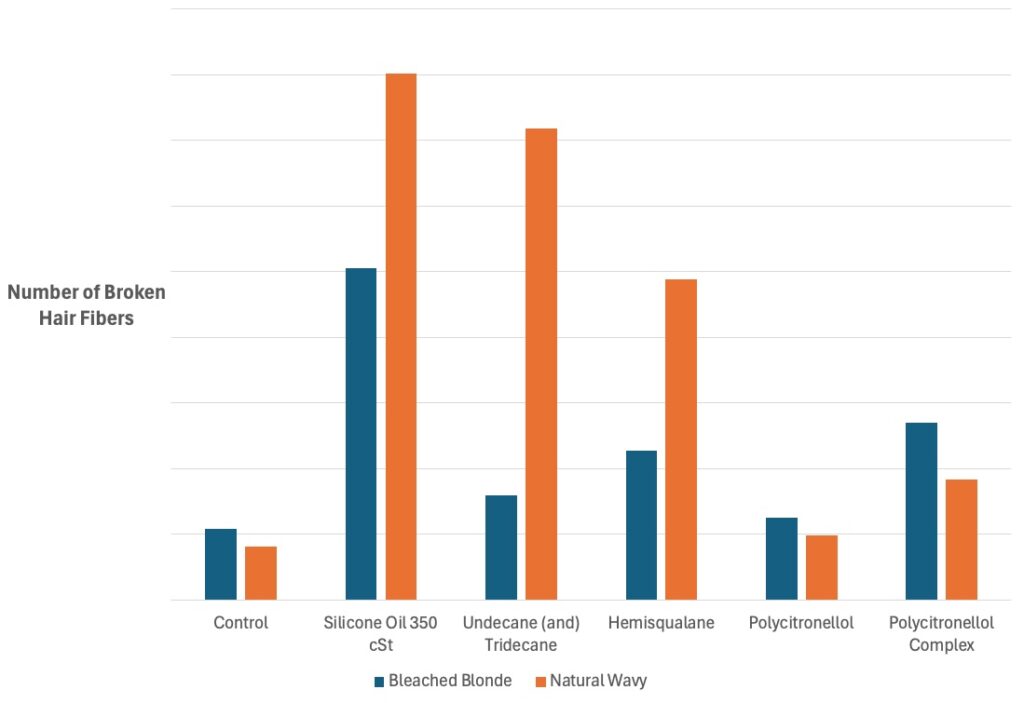
Figure 4. Hair breakage after 16,000 combing cycles as measured by the total broken fiber pixels in the Sirtaki instrument for damaged hair (bleached blonde tresses) and undamaged hair (natural wavy tresses).
We also studied how emollients affected hair breakage due to prolonged combing, using a Bossa Nova Vision Sirtaki instrument, combing the hair tresses repeatedly for 16,000 cycles. The instrument measures the coefficient of friction on dry hair tresses during combing and also measures the number of broken hairs after combing (Figure 5). For damaged hair (bleached blonde tresses), the emollients are not significantly different from the control, except for silicone oil, which caused much more breakage. The results on undamaged hair (natural wavy tresses) indicate that polycitronellol performed similarly as on damaged hair, but the other emollients including silicone oil did much worse.
Finally, we measured the shininess of hair tresses after conditioning with a Courage-Khazaka Skin-Glossymeter. We found that Polycitronellol was comparable to the commercial emollients and to the control for both hair types (Figure 5).
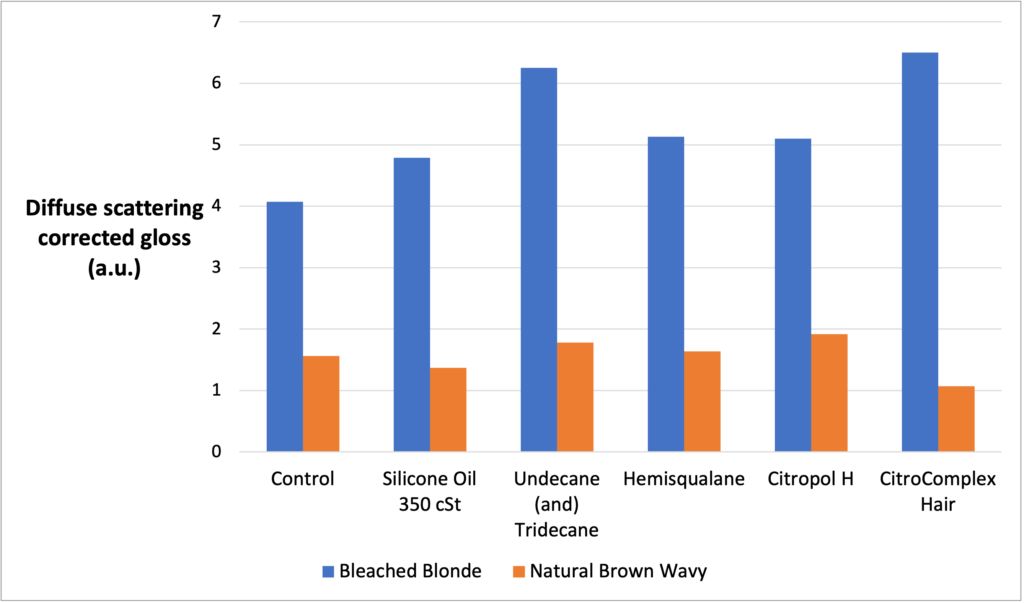
Figure 5. Diffuse scattering corrected gloss for all test products and for both bleached blonde and natural wavy hair tresses.
In summary, we found that using polycitronellol in the hair conditioner during wet combing made the hair more conditioned and less tangled compared to the control and to other emollients. For both hair types, polycitronellol treated hair showed much less breakage compared to silicone oil and other emollients in repeated combing. The treated hair tresses were glossy independent of the conditioning treatment.
We can explain these results by considering the physicochemical properties of Polycitronellol. It is unique not only because of its green and sustainable provenance, but also because it is a highly nonpolar, branched, and unsaturated polymer. This structure makes it an excellent conditioner in wet combing, where we postulate that it coats the hair in a thin lubricating film, independent of the hair type.5 Polycitronellol outperforms all other emollients in hair damage prevention, possibly because they wet the hydrophobic cuticles very well, forming a thin film that does not easily wash off in hair rinsing after conditioning. Hair is composed of keratin protein fibers covered by cuticles, which are layers of dead cells covered in sebum.6 Each cuticle is covered by a thin lipid layer which renders it hydrophobic.7 In damaged hair, the cuticles may be damaged and the lipid layer may not be continuous, exposing the hydrophilic keratin fibers. These hydrophilic fibers are not as well wetted by the oily Polycitronellol.
In conclusion, we have shown that Polycitronellol has unique properties when used in a hair conditioner formula. It conditions and detangles significantly better than other emollients in wet combing and strengthens the hair against breakage. We plan to investigate the mechanism of these effects in more detail.
References
- Kevin F. Gallagher, “How Market Trends Have Shaped The Industry – Tips, Traps, And Lessons Learned”, Cosmetics & Toiletries 2023, September issue, 38-39, DM31-DM38.
- Marc N.G. de Mul, “Startup Solutions: A Survey of Green and Sustainable Innovations”, Cosmetics & Toiletries 2021, July/August issue, 22-30.
- Patrick Foley, Yonghua Yang, “Polyethers, polyamines, polythioethers, and methods for making same”, U.S. Patent 10,059,801 (2018).
- Patrick Foley, “Polycitronellols Reinvent Green, Sensorial Chemistry and Cosmetics”, Cosmet. Toil. 2023, 26-29/DM5-DM8.
- Aarti S. Rele, R.B. Mohile, “Effect of mineral oil, sunflower oil, and coconut oil on prevention of hair damage”, J. Cosmet. Sci. 2002, 54, 175-192.
- Si Hyun Lee, Cheunsoon Ahn, “Efect of rinse‑of hair conditioner containing argan oil or camellia oil on the recovery of hair damaged by bleaching”, Fashion and Textiles 2022, 9 (17), 1-24.
- Maria Fernanda Reis Gavazzoni Dias, “Hair Cosmetics: An Overview”, Int. J. Trichology 2015, 7 (1), 1-15.
